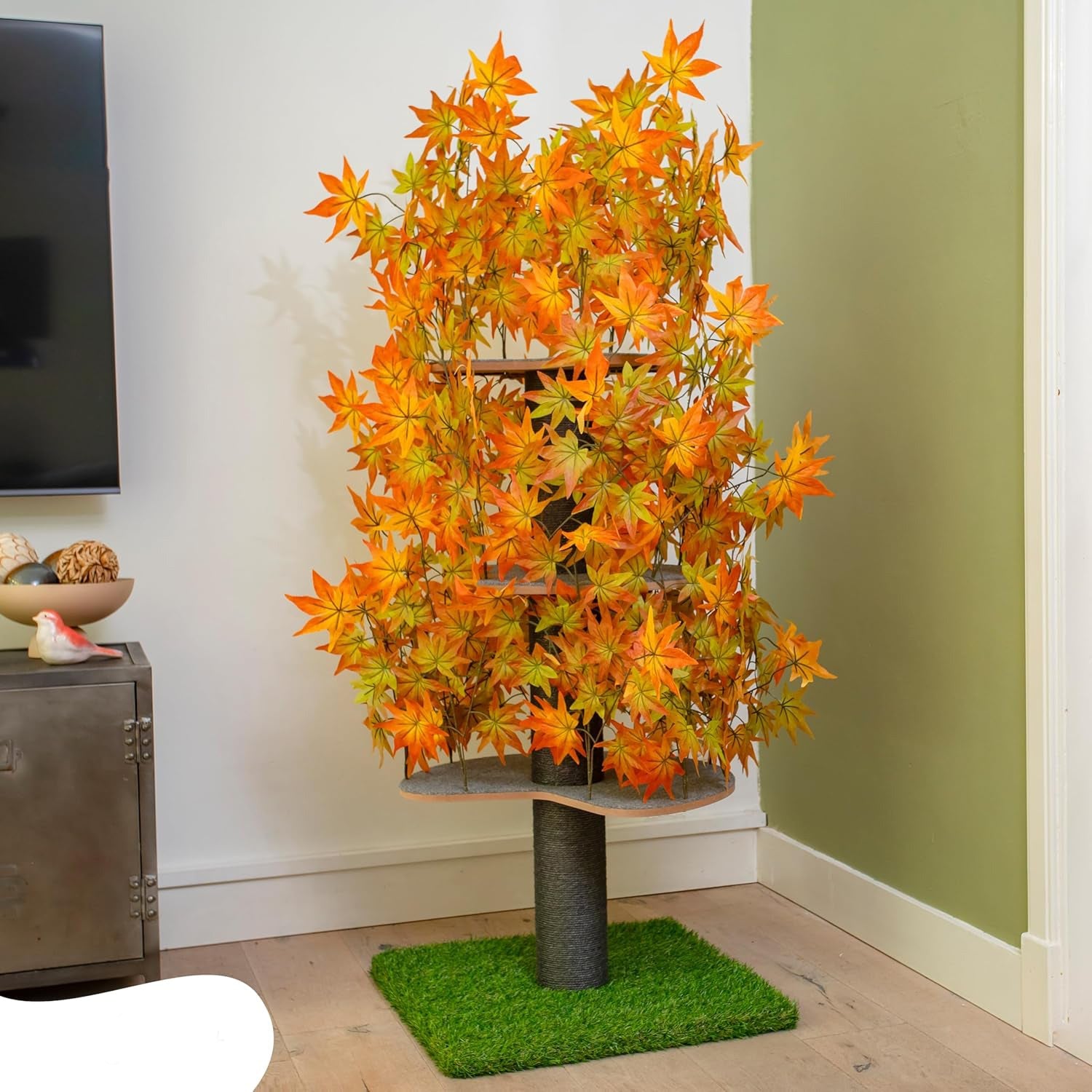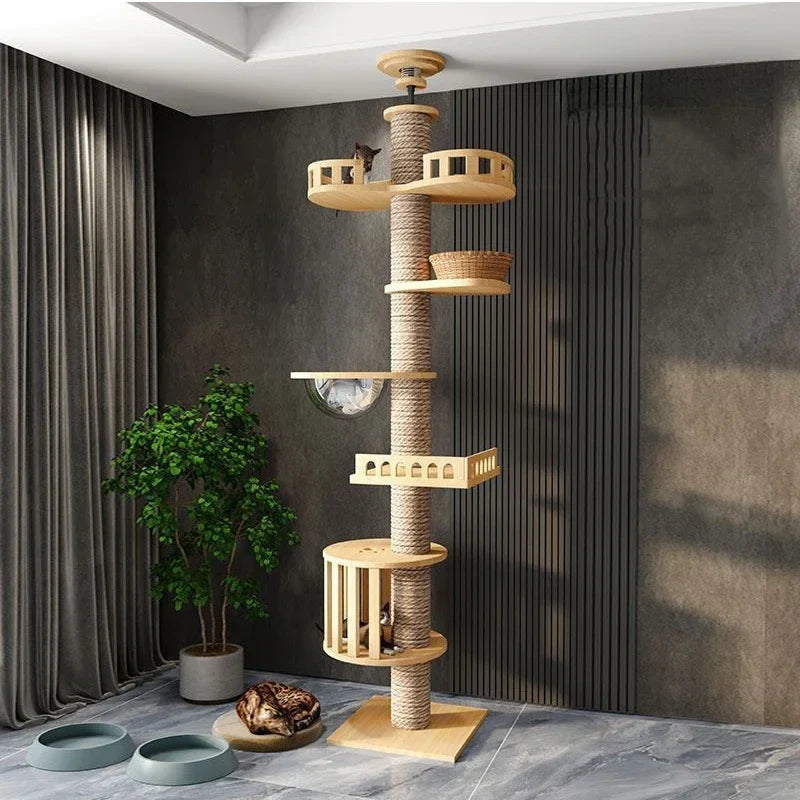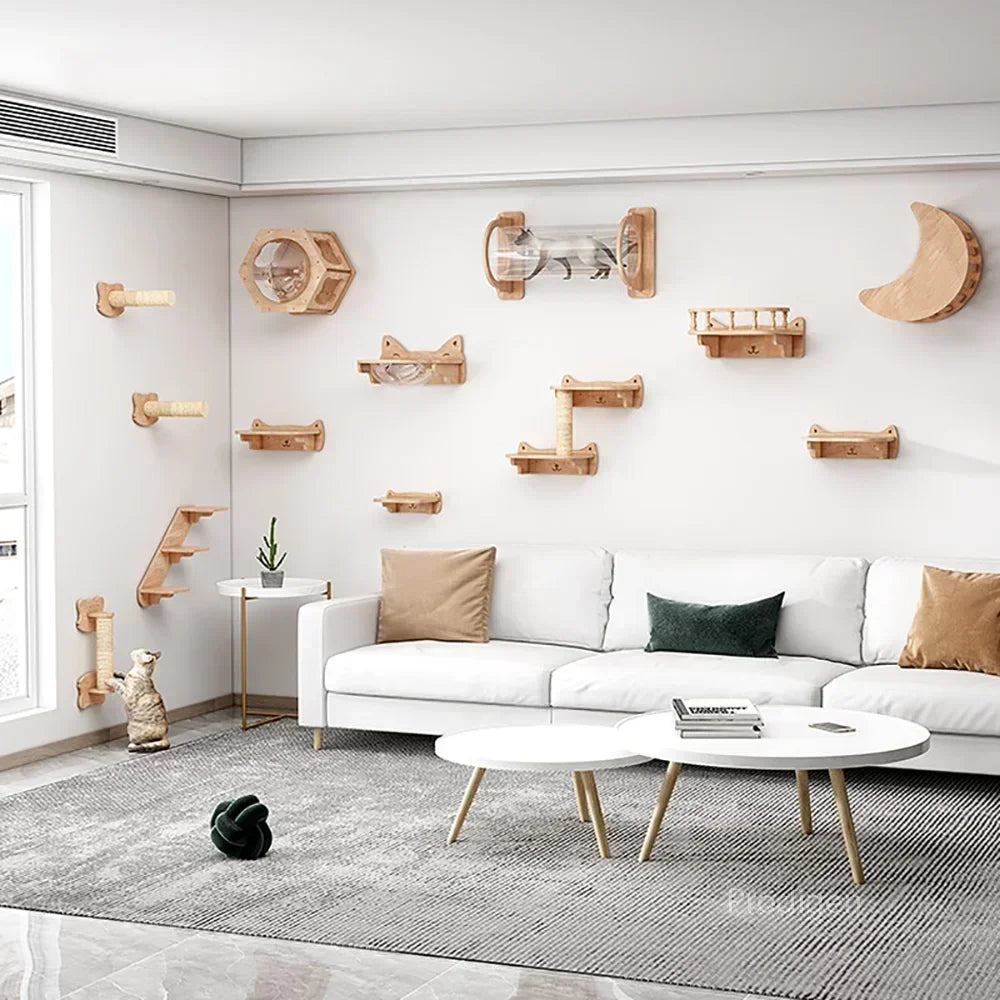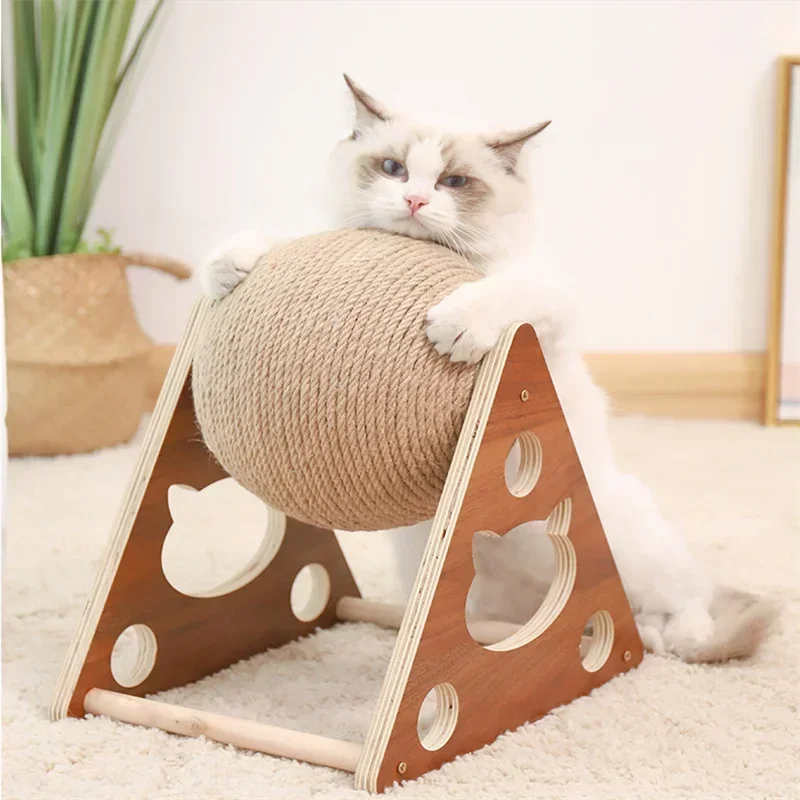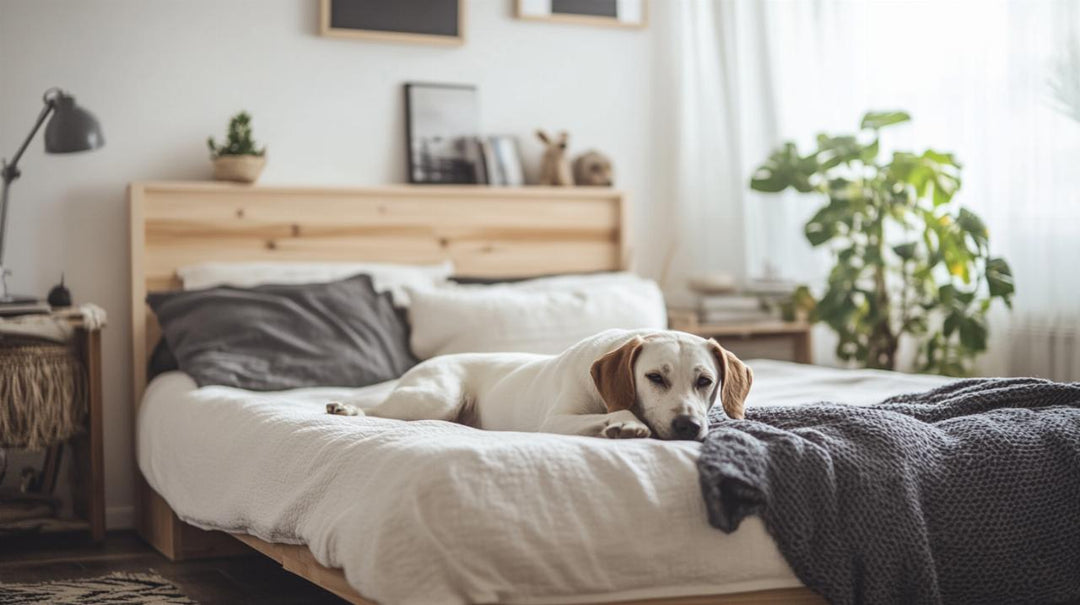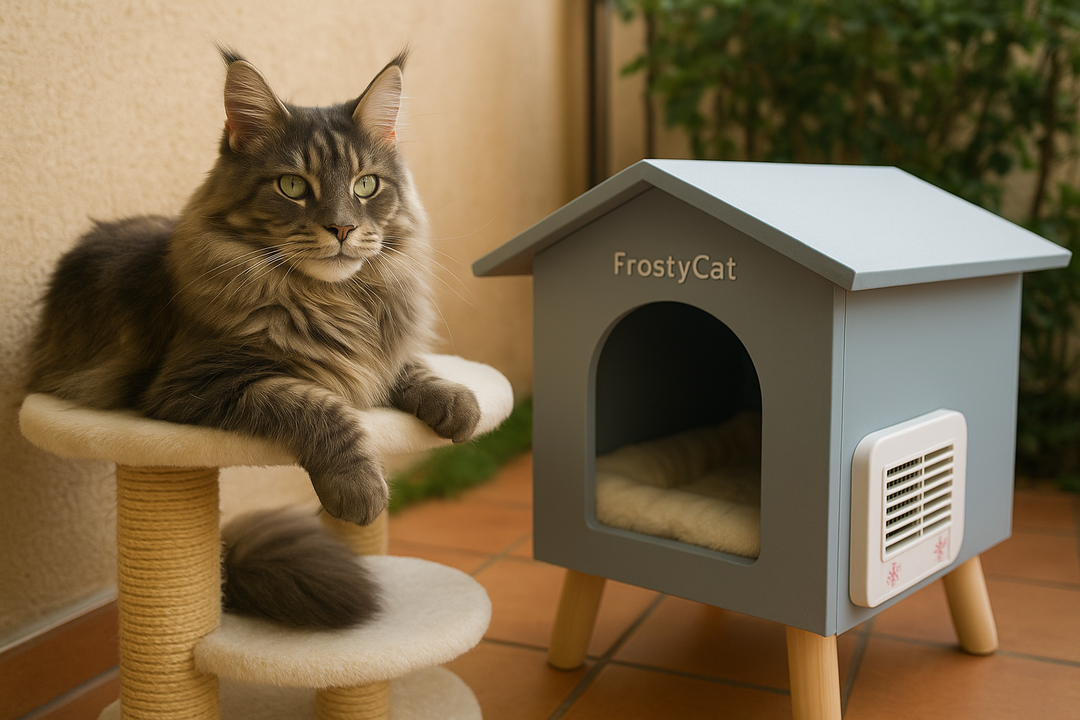What is the best cat tree in 2025?
In 2025, cat trees are no longer just accessories to entertain our felines: they have become true design elements, designed for the well-being of the animal and the harmony of your home. But faced with the multitude of models, how do you choose the right cat tree? The answer depends above all... on your cat! And no, not all cats are alike.
In this article, we will help you to see more clearly according to the types of cat trees available, the materials, the size, but also the specific needs according to the breeds.
The different types of cat trees: floor-mounted, wall-mounted, or floor-to-ceiling?
1. Cat trees placed on the ground
This is the most common model. They are often easy to install, stable, and suitable for most cats, especially those who like to observe their territory from a medium height. They are available in several sizes, with platforms, hammocks, or niches. Discover our floor-standing cat trees.
Ideal for: medium-sized adult cats such as the European, Ragdoll, or Chartreux.
2. Wall-mounted cat trees
Stylish and space-saving, wall-mounted models attach directly to the wall. They free up floor space while creating a vertical agility course. Perfect for active and curious cats. Discover our wall-mounted cat trees .
Ideal for: Agile breeds like the Bengal, Abyssinian, or Siamese, who love to climb and jump.
3. Floor-to-ceiling cat trees
These models are perfect for homes looking to provide maximum vertical activity. They are height-adjustable and fit perfectly in rooms with standard or high ceilings. Discover our floor-to-ceiling cat trees.
Ideal for: Households with multiple cats, or larger breeds like the Maine Coon or Norwegian Forest Cat, who need strength and space.
Raw wood or soft fabric: which material should you choose?
Natural wood, often used for high-end trees, provides a sleek and robust look. It is more durable over time and respects the cat's scratching instinct, especially when combined with natural sisal elements.
Sisal, in fact, is the most popular plant fiber for scratching posts: strong, ecological, and very pleasant for claws.
Models covered in soft or plush fabric are cozier, more cocooning, and perfect for cats who like to curl up in a quiet corner. On the other hand, they often get messier and get damaged more quickly.
What size cat tree should I choose?
The size depends on several factors:
- Your cat's age: A kitten does not have the same abilities as an adult.
- The number of cats in the household.
- The breed: an 8 kg Maine Coon will not have the same ease as a small Persian.
- And of course, the space available at home
|
Tree size |
Suitable for |
|
Small (< 1 m) |
Kittens, older cats, calm breeds (Persian, British Shorthair) |
|
Medium (1 to 1.5 m) |
European cat, Ragdoll, indoor cats |
|
Tall (> 1.5 m) |
Maine Coon, Norwegian Forest Cat, several cats or very active cats (Bengal, Siamese) |
Adapt the cat tree to your feline's personality
Because beyond breed, every cat has its own unique personality. Some like to dominate the room from above, others prefer dark, reassuring corners. Some are very playful, others are much more sleepy.
The ideal is therefore to choose a cat tree that combines different functions: observation post, hiding place, scratching post, and soft bed.
Conclusion: The best cat tree is one that respects your cat's lifestyle.
There's no one-size-fits-all model. The best cat tree in 2025 is the one that fits into your home while meeting the physical and mental needs of your four-legged friend. Remember: a happy cat is a stimulated cat, one that can climb, hide, scratch, and rest safely.
And you, what type of cat tree did you choose?
Take the test on our site to find the ideal model according to the breed, age and personality of your feline!
Check out ThePrucePet's model rankings.
Samia 2025 ranking (Several of our models are included): here .
